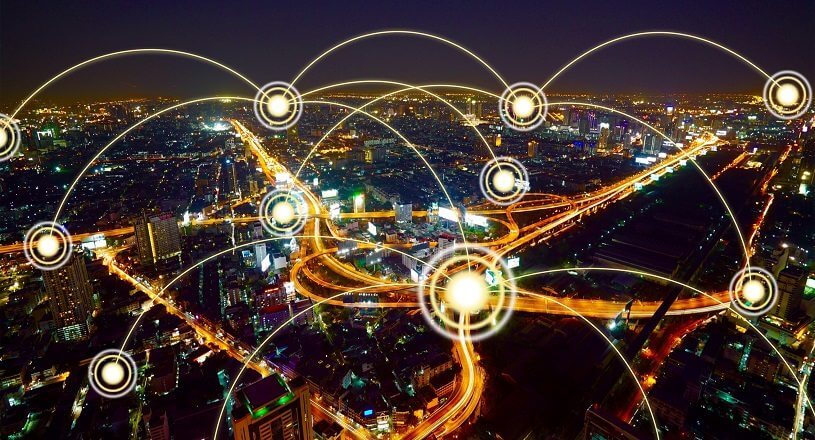You’ve probably already heard of “smart cities”—the term has been circulating for over 10 years, after all. Media outlets always seem to be reporting on yet another city launching an innovative program and setting itself apart. In fact, The Guardian devotes a whole section of its website to the notion.
Asian and European urban centres are especially active on this front, but North American cities have followed suit with their own initiatives, such as the “Montréal, Smart and Digital City” project.
WHAT IS A SMART CITY?
There is no one-size-fits-all definition of the smart city—the term has been assigned a wide range of informal definitions, most of them quite broad. The concept encompasses several aspects and can take many practical forms. While no single definition has been accepted across the board, generally speaking:
“A smart city is an urban development vision to integrate information and communication technology (ICT) …. to enhance [the] quality, performance and interactivity of urban services, to reduce costs and resource consumption and to improve contact between citizens and government. Smart city applications are developed to manage urban flows and allow for real-time responses.” Source: Wikipedia
Several sources instead emphasize another essential feature of smart cities: resource optimization. The ever-increasing concentration of urban populations make is necessary for cities to plan the use of their resources more carefully. Think about it: urban areas cover 2% of the Earth’s surface, yet 50% of the world’s population lives in cities and observers expect this figure to reach 70% by 2050. It doesn’t seem like a stretch to say that cities are a central hub of human activity.
When it comes to managing water, electricity, roads and equipment, cities need a process optimization strategy. This is where data comes into play.
OPEN DATA A THE SERVICE OF CITIZENS
Once information systems have been implemented by a city, different kinds of data are collected, the value and potential of which can’t be overstated—we just have to unlock it.
Data is collected at an unprecedented rate and can be processed, analyzed and studied from every angle to anticipate the population’s needs, optimize resource allocation and reduce operational costs.
Systems interconnectivity and information sharing (open data) are paving the way for a world of possibilities. Cities can use “open data” to deploy the digital creativity of their application developers and harness a multitude of digital devices. Solutions for monitoring snow removal operations, updated in real time from an open data service, are one such example.
Of course, for stakeholders to process data, make useful extrapolations and turn this information into services, the data must be published in a readable, usable format. The increasing number of sources and types of data available can make this a challenge. Organizations must often handle, convert and validate information before making it available for use; they might also wish to share data in several formats, increasing the likelihood that it will be integrated into other systems and databases.
CONNECTED CITIES, INVOLVED CITIZENS
On top of the data collected by a city’s systems, residents can do their part to collect data by participating in different initiatives. Such projects can help cities detect equipment issues, for example, or measure infrastructure use—the possibilities are endless. All residents have to do to join the movement is use the wealth of technology already available at their fingertips.
Whether it’s a question of helping people get around, dispatching information in real-time or getting a better idea of service usage, when it comes to smart cities, open data has a lot to offer.
Would you like to share your concerns with us, or find out more about open data? Our specialists are here to help.
